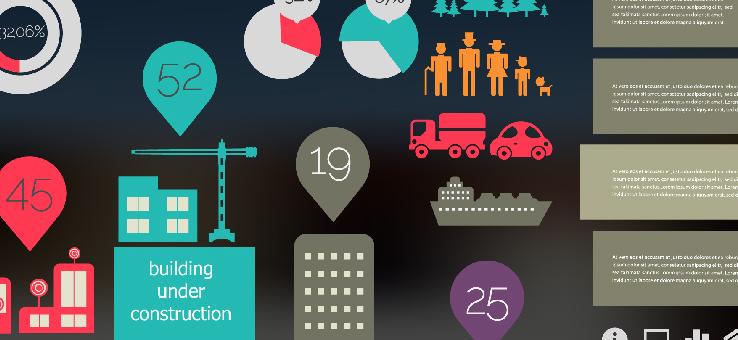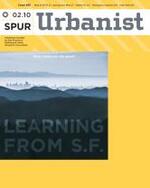
The SPUR Plan to Solve the MTA Budget Crisis—without Service Cuts or Fare Increases
News / In response to the looming budget deficits faced by the San Francisco Municipal Transportation Agency, SPUR Executive Director Gabriel Metcalf today sent a letter to the MTA outlining a set of measures that could balance the budget this year and next, while avoiding service cuts and fare hikes. The twenty-eight proposals include a diverse range of ideas including hiring part-time operators ($6 million in savings)…
Explore Climate Action Activities with the San Francisco Bay Area Climate Action Portal!
News / Climate change is a global problem, and the San Francisco Bay Area is especially threatened. Around one thousand miles of shoreline frame the region, so we will be greatly affected by sea level rise and intensified storm activity. Given our particularly risky situation, the Bay Area is on the forefront of climate change action. The Bay Area Air Quality Management District and the Institute for…
T4A: Create Jobs by Investing in Transportation
News / Public transportation gets millions of Americans to and from their jobs every day. Transportation for America, a national public-transit and smart-growth advocacy organization, thinks investing in our transportation sector can create jobs as well. In response to the jobs bill now working its way through the Senate, which would largely offer tax cuts to small businesses, T4A has proposed instead that funding be…
A Flip of the Lens: What's RIGHT with San Francisco?
News / [Image: flickr user VancityAllie] Slow buses. Skyrocketing housing costs. Preventable budget deficits. It's easy to rattle off the myriad things wrong with our city. In many ways, SPUR's very existence and mission are rooted in a practice of taking a hard look at our bad decisions, and accepting responsibility for them as a first step toward changing the city for the better. But we…
Despite Recession, Cycling Sees Dramatic Increase in SF
News / The recession has caused both private auto and public transit use to fall in the past couple of years, both in San Francisco and throughout the country, as travelers cut out superfluous trips to save money and those who have lost their jobs simply do not have anywhere to go. Yet one mode of transportation in SF has shown massive mode-share gains over the same…
Eat on the Street!
News / Streetfood is not new. In fact, since the existence of streets and the commoditization of food, streetfood has been an integral aspect of daily life for cultures around the world. That being said, it is undeniable that there has been a growing trend in San Francisco and other American cities towards selling a creative array of food – from Korean tacos to crème brulée –…
Sustainability and Simplicity
News / As students rushed home for the day, SPUR members filtered in for a tour of the San Francisco Friends School. Built in 1906 after the earthquake and fire, the building housed Levi Strauss & Co. until 2002. Fundraising for the Friends School began in 2006, and classes commenced in September of 2008. Peter Pfau and Kami Kincaid of Pfau Long Architecture explained their process…
Woe is Parking.
News / As someone who has lived in this city for virtually my entire life, there is one thing I know for sure – parking is a pain. Were I to calculate the total time I’ve wasted cruising for a parking space or the total amount of money I’ve spent in parking tickets, I might go insane. However, we are not just losing our time, money, and…
Learning from Washington D.C.
News / This past fall, a group of SPUR board members and staff traveled to Washington DC to learn from the urban-planning successes of our nation's capital; today, three members of that group presented their findings at a lunchtime forum. SPUR Deputy Director Sarah Karlinsky began the discussion with an overview of the Washington urban planning models from Pierre L'Enfant's plan of 1791 to and James McMillan's…
SPUR and streets on film!
News / Deputy Director Sarah Karlinsky was featured in a short film this week on the future of San Francisco’s streets. Streetsblog San Francisco posted a video on Monday showcasing the Making a Better Market Street Project. The project envisions Market Street as a grand boulevard similar to La Rambla in Barcelona, the Champs-Élysées in Paris, or the more recently reconfigured public space in New York’s Times…
Sea Level Rise, Way Worse than We Thought (Again)
News / A paper this week in what is arguably the world's most prestigious scientific journal, Nature, says that the last time the Earth warmed up as much as it will under climate change, sea levels rose about 8 meters. This means that global sea level rise over the coming decades may be about twice as worse as we thought. When we published two articles in the…
Coming soon: energy efficiency loan program
News / SPUR's analysis of the cost-effectiveness of various options for local government to reduce carbon emissions has gotten around. Our evaluation showing that in San Francisco, a low-interest loan program to finance home energy efficiency retrofits would be more cost-effective than new incentives for renewable energy installations, was featured in an EPA presentation for local governments on how to use stimulus funding. The presentation is accessible…
Greening Paris
News / Fall programming concluded November 18th with bikes, parks and policy in the City of Light. Writer and lecturer Marilyn Clemens illustrated current trends in Parisian roadway and park design, which follow the geometry of the classical era, while also redefining the purpose of public space. The Alliance Française generously sponsored the event. Clemens reported walking as the most popular method of circulation, and the city…
[Literature] in the City
News / The Young Urbanist [Literature] in the City forum at SPUR on November 10th presented a lively discussion on this topic and other aspects of the history and culture of San Francisco’s literary community. Stephen Elliott of the San Francisco Writer's Grotto and editor of The Rumpus, writer and City Lights editor Elaine Katzenberger, and Filipino American poet and professor Barbara Jane Reyes joined the…
Windfall for All
News / Study after study has shown that cities prioritize development that lets visitors and residents walk, bicycle, or take public transit to get around, people are healthier and have far less negative impact on the environment. Now, a new study by TransForm entitled Windfall for All demonstrates another benefit to developing livable communities: people who do not use cars to get around spend far less…
Picturing Climate Change: Special Event!
News / This Wednesday, join the Alaska Conservation Foundation for an evening with National Geographic photographer James Balog. Mr. Balog, an award wininng photographer for over 25 years, will share his groundbreaking work to capture the reality of climate change by photographing the world’s shrinking glaciers. Through time-lapse footage, Mr. Balog will share his efforts to design equipment, underwrite, and produce one of the world’s most…
Planning for the San Francisco Bay, Wayne Gretzky Style
News / How fast do you have to be to outrun rising tides? According to Will Travis, of the Bay Conservation and Development Commission this is a challenge that the Bay Area faces. Travis informed and entertained a large crowd at a forum at the Urban Center this past Tuesday, covering a wide range of issues including environmental justice, adaption strategies, importance of tidal wetlands, and his…
Emerald Cities: How are Cities Advancing the Shift to a Green Economy?
News / [Image: Green roof in Toronto from urbanneighbourhood] How can cities best position themselves in the green economy? What is the role of manufacturing in urban areas? How can a city best choose an economic development strategy given its size and unique economic history? How should federal policy support policy innovation among cities? Join us for an evening discussion with nationally-recognized visiting writer and professor…

